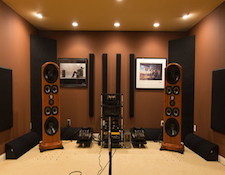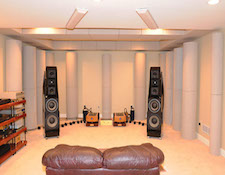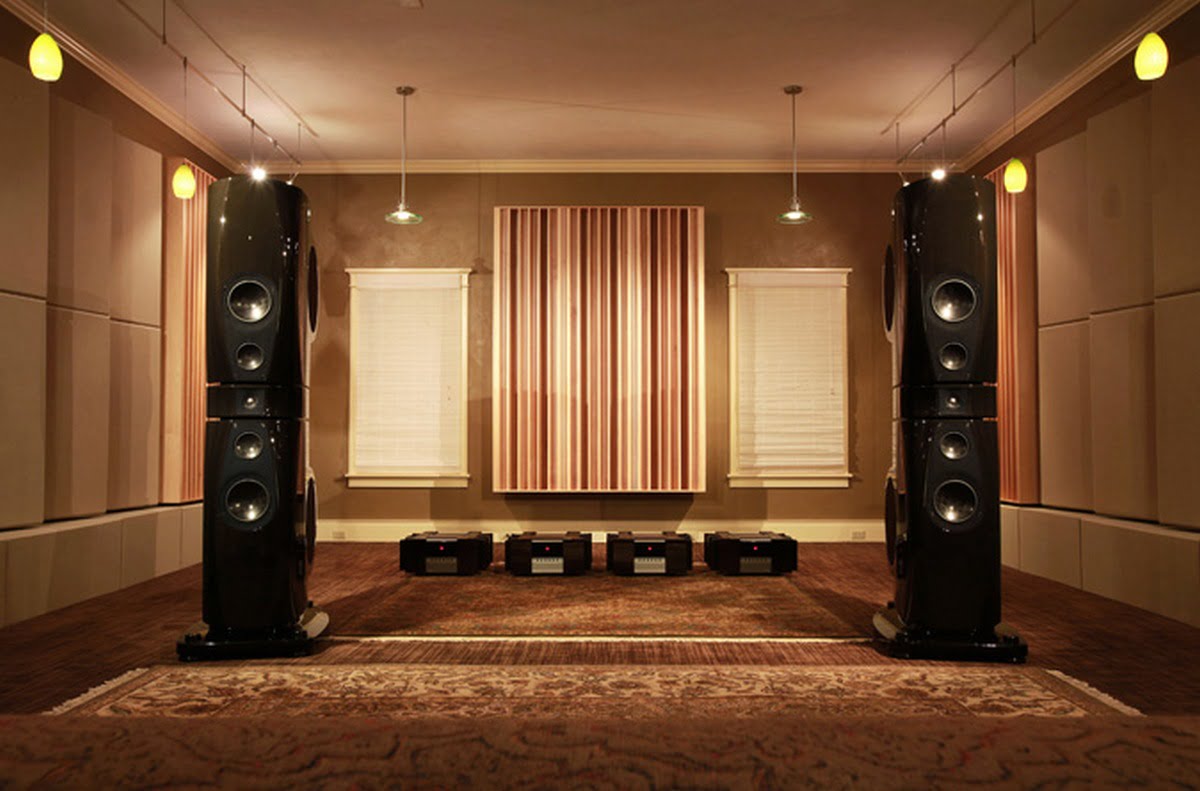It’s the time of year for saving money!
As its title indicates, the purpose of this continuing series of articles is to help you get the very most for your money when you buy a Hi-Fi system. One word of that title, though, while certainly correct, can be a little misleading. That word is “shopping”, and the thing that’s potentially misleading about it is that it may seem to imply that buying new, more, or different stuff is the best way to get good value. In fact, though, there are not just one, but three different ways to do that, and not all of them require any shopping at all. One is, of course, to buy a whole system that will be the best possible for any given amount of money. Another is to buy as little as possible (number of things) or to pay as little as possible (same number of things, but bought for the best possible price) to improve an existing system to whatever desired level. The third (and, frankly, my favorite) is to spend little or nothing to improve an existing system by finding new or better ways to use what you’ve already got to get the improvement you’re looking for. That’s what much of this series will be about wherever possible.
 In Part 4, I wrote that a major part of the sound quality you’ll get from any system will have to do with the room that it’s played in, and that all too often the fact that the room is a component of your system is ignored completely. I then went on to say that “…To give you an idea of how important I think the room is, back when my daughter was still growing-up, I remember saying to someone that if I had US$100,000 to spend for a Hi-Fi system, I’d probably spend US$10,000 for the speakers, US$ 20,000 for the rest of the equipment, US$20,000 for building or treatments or modifications to improve the acoustics of my listening room, and keep the remaining US$50,000 for her college education.
In Part 4, I wrote that a major part of the sound quality you’ll get from any system will have to do with the room that it’s played in, and that all too often the fact that the room is a component of your system is ignored completely. I then went on to say that “…To give you an idea of how important I think the room is, back when my daughter was still growing-up, I remember saying to someone that if I had US$100,000 to spend for a Hi-Fi system, I’d probably spend US$10,000 for the speakers, US$ 20,000 for the rest of the equipment, US$20,000 for building or treatments or modifications to improve the acoustics of my listening room, and keep the remaining US$50,000 for her college education.
The room is THAT important and, in Part 5, I said that, unless you can, and are willing to make your listening room a dedicated “Listening Room” – a place where serious listening is its first, even if not its only purpose — and set it up accordingly, your “High-Intention” system will never be all that it can be, regardless of how much money or effort you throw at it. Then I went on to describe one particular all–out-and-amazingly-effective listening room that I’d heard in Brazil; said that, although that had cost a ton of money, yours didn’t have to; and said that, in this installment, I’d start to show you how you could get noticeably better sound for as little as no money at all.
Well, here goes…
One of the great features of that foreign listening room was its “open” corners, which didn’t allow for bass bloat as a result of corner augmentation. In your own room, instead of open corners, you can use bass traps to “tighten” your low-frequency sound. I’ll go into that in a bit, but first let’s take a look at the shape of your room, at your speakers, and where you have placed, or should place them. Depending on those three things, you may actually WANT the bass boost that “hard” corners can provide.
The first thing to consider is the size and shape of your room to see if, simply by rearranging your system or your furniture you can get better sound. If that’s all that’s necessary, the improvement may be substantial and it may cost you nothing at all!
 Let’s look at room size first: For good listening, you’re going to want a room big enough to place your speakers so that they can deliver their full performance. Proper placement is essential to good sound quality, and, no matter how good your system is or what kind or how great your speakers may be, unless you can place them properly, you’re NOT going to get the sound they’re capable of. Going back to that “dedicated listening room” issue in Part 5, if the room you’ve selected or are using now isn’t sufficient, you may even want – if you can — to move your system to a different one.
Let’s look at room size first: For good listening, you’re going to want a room big enough to place your speakers so that they can deliver their full performance. Proper placement is essential to good sound quality, and, no matter how good your system is or what kind or how great your speakers may be, unless you can place them properly, you’re NOT going to get the sound they’re capable of. Going back to that “dedicated listening room” issue in Part 5, if the room you’ve selected or are using now isn’t sufficient, you may even want – if you can — to move your system to a different one.
Generally to get your speakers properly placed, you’ll need a room big enough so that your speakers can be both far enough apart for good imaging (typically 6-8 feet) and far enough (at least two or three feet) away from the side and back walls to control disruptive reflections and deliver a good soundstage. Having your listening position (your couch or listening chair) a few feet away from the wall behind your head can help with this, too. Of course, this is a general recommendation, and exceptions are certainly possible: Certain early speaker models from Boston Acoustics and certain “bookshelf” speakers were specifically designed to be placed directly against the “base” wall (the one you look at while listening) of your room and professional “near-field” monitors (popular with many recording and mastering studios), are intended to be placed VERY close to the listener (often on a desk or mixing console) and thereby make the room as little a relative part of the sonic presentation as possible. For most home speakers, though, keeping your speakers away from the walls will usually be your best bet.
 The next thing to consider when planning or picking a room to be your dedicated listening room is its shape. Is the room you’re considering (or stuck with) a regular rectangle? Is it square or nearly so? Or does it have one noticeably longer dimension and one shorter one? Are all of the walls parallel? Or are two parallel and two not? How many doors or “pass-throughs” does it have? Where are they? Are all of the walls complete? Or are one or more of the walls only partial or “stubs”? Is there at least one UNBROKEN wall (No doors, windows, or Pass-throughs) that you can use as the base wall for your speakers? If you do that, can the room’s furniture be arranged to give you both a good-looking and good-sounding listening position?
The next thing to consider when planning or picking a room to be your dedicated listening room is its shape. Is the room you’re considering (or stuck with) a regular rectangle? Is it square or nearly so? Or does it have one noticeably longer dimension and one shorter one? Are all of the walls parallel? Or are two parallel and two not? How many doors or “pass-throughs” does it have? Where are they? Are all of the walls complete? Or are one or more of the walls only partial or “stubs”? Is there at least one UNBROKEN wall (No doors, windows, or Pass-throughs) that you can use as the base wall for your speakers? If you do that, can the room’s furniture be arranged to give you both a good-looking and good-sounding listening position?
If there is such a wall, that’s the one to base your room’s furniture and system layout around. Regardless of anything else you might have been told, the absolutely most important thing about setting-up a listening room is symmetry – having the room halves on both sides of an (imaginary) line drawn from the center of the base wall to your listening position be acoustically identical. Too “live or too “dead” sonically can usually be fixed with room treatments relatively easily. Room asymmetry, which can affect your system’s ability to “image”, is MUCH more difficult, and may never be possible to fix at all.
If, for whatever reason – an incomplete wall or windows, for example, or a door, or even two — you don’t have a suitable wall to base your system in front of, pick the one closest to usable. It IS possible to compensate for asymmetrical conditions, but the easier way is usually the best.
More on this and more next time, See you then.








